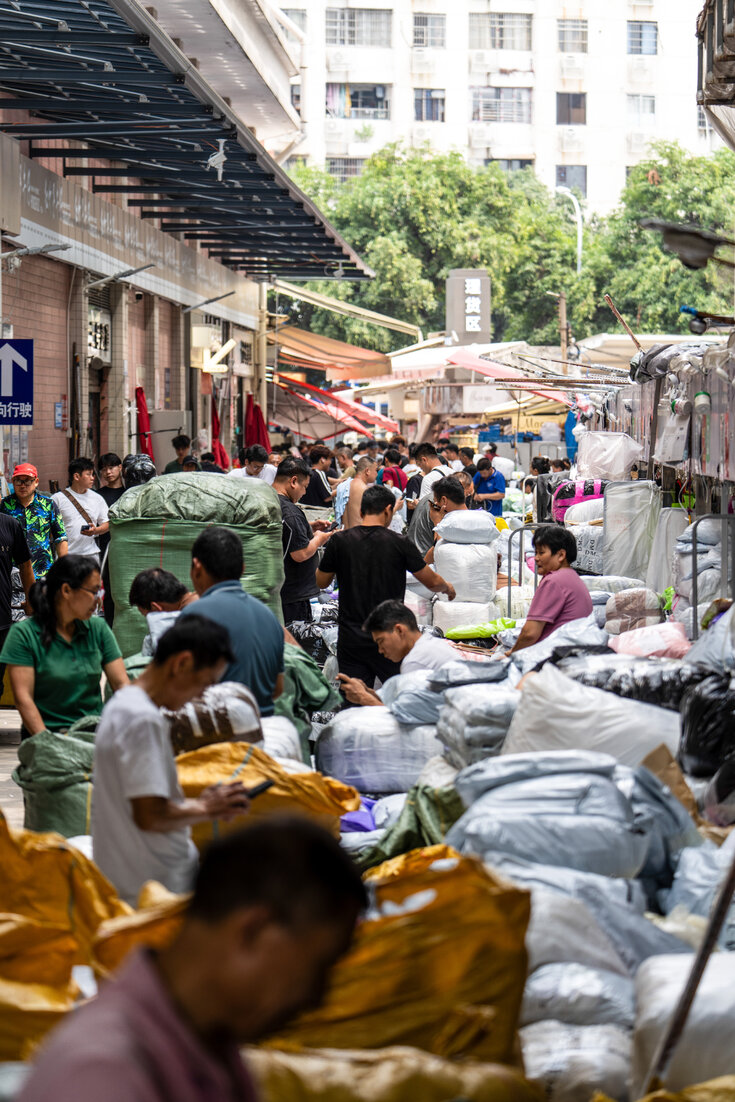
Source: nytimes.com
Image content: The image depicts a bustling outdoor market scene, with numerous individuals engaged in various activities. The main subject of the image is a crowded marketplace where people are gathered to buy and sell goods, primarily textiles or fabrics stored in large bags. The atmosphere appears lively and busy, with many people moving about and interacting with one another.
Summary
China's economy is facing significant challenges due to US tariffs, leading to diverted exports, declining orders, and reduced profitability in industries such as garment manufacturing. Economists predict deeper deflation, weak consumption, and excess capacity, with GDP growth potentially falling below the government's target.
Key Points
- China is diverting exports to the domestic market due to US tariffs, risking deeper deflation and intensifying price wars.
- Garment factories in China, particularly in Guangzhou, are struggling with declining orders, reduced profitability, and suspended production lines.
- Industry workers are adapting to the challenges by seeking new buyers, relocating to avoid tariffs, or shifting production to other regions.